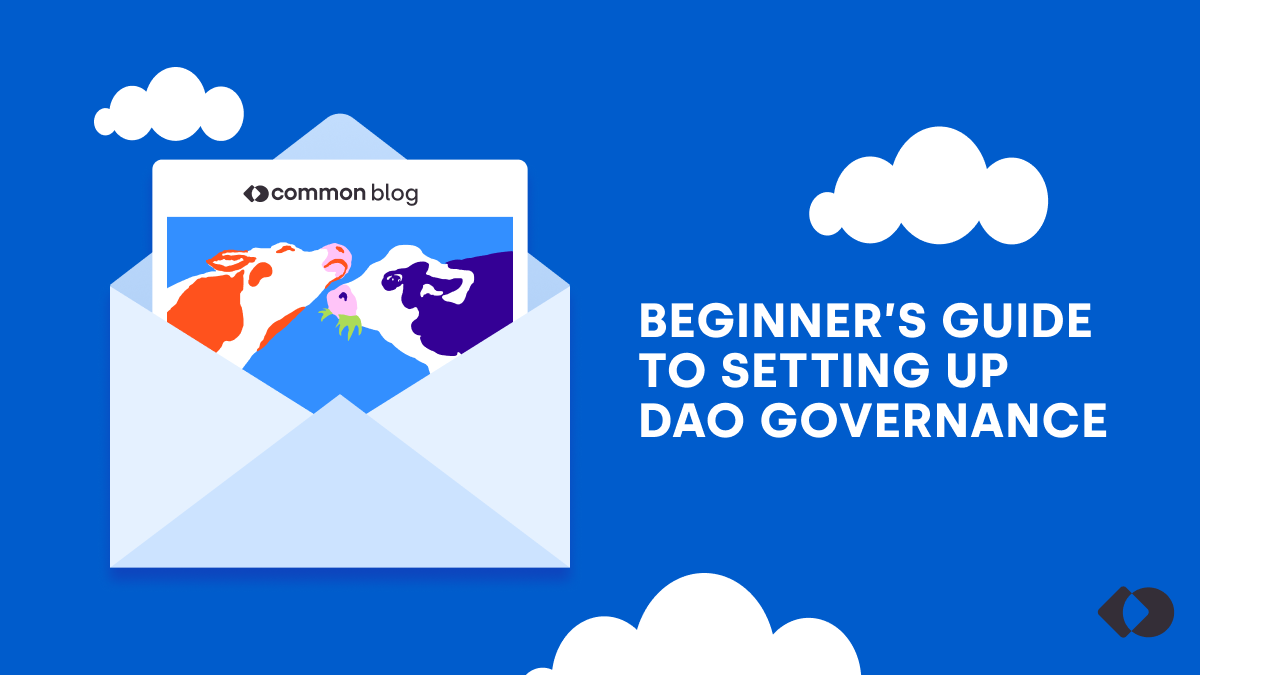Beginner's Guide to Setting up DAO Governance

In the ever-evolving realm of web3 governance, each community embarks on a journey filled with choices, including whether or not to implement onchain or offchain governance. Both options have proven their worth in enabling robust community-driven decision-making within web3 communities. So the question is comes down to this: which option should my community leverage?
Since no two communities are identical, there is no one-size-fits-all answer when choosing between onchain and offchain governance. Moreover, some innovative projects may adopt a hybrid approach, combining elements from both sides to enjoy the benefits of transparency, security, expertise, and efficiency. This decision should be made after careful consideration of your community's goals, values, and the specific context in which your blockchain operates.
Onchain Governance for Onchain Communities:
Communities based onchain often employ onchain governance mechanisms for collective decision-making regarding protocol upgrades, changes to consensus rules, and resource allocation. Let's begin by exploring how onchain governance empowers online communities.
Benefits of Onchain Governance for EVM Communities:
- Enhanced Transparency: Onchain governance ensures full transparency by meticulously recording every decision, vote outcome, and proposal on the blockchain. This allows any community member to verify the history and outcome of any proposal at any time.
- Heightened Security: Many onchain governance systems distribute decision-making power among token holders, making it challenging for any single entity to control the network or manipulate decisions. Decentralization enhances the security of the governance process.
- Incentives for Participation: Some onchain governance systems reward participants with tokens or other incentives for actively engaging in the decision-making process, which has been shown to increase average engagement levels.
However, the path of onchain governance is not without its share of challenges.
Challenges of Onchain Governance in EVM Communities:
- Slower Decision-Making: Onchain governance involves multiple time-locked stages, including proposal submission, discussion, and voting. Time-sensitive changes to proposals are slower to implement due to these stages being time-locked.
- Participation Barriers: Due to the nature of onchain governance, some smaller voters might be deterred from voting or creating proposals as each governance transaction requires gas, potentially resulting in lower-than-average voter turnout.
- High Cost: Gas is the currency required to execute any onchain action in governance, and in networks plagued with congestion and naturally inflated gas prices, communities may opt for more economically viable offchain solutions.
Examples of On-chain Governance Frameworks
Open Zeppelin Governor: https://docs.openzeppelin.com/contracts/4.x/api/governance
Governor Bravo: https://docs.compound.finance/v2/governance/
Curve: https://resources.curve.fi/governance/understanding-governance/
Benefits of Offchain Governance in EVM Communities:
In contrast, offchain governance in EVM communities often involves more centralized decision-making entities, such as development teams and foundations, and leverages tools like Snapshot to facilitate the governance process.
- Speedy Decision-Making: Offchain governance provides a haven for expert teams to make informed decisions swiftly, usually involving a discussion period, Snapshot, and sign-off of a multi-signature wallet. This process is typically less complex than onchain governance procedures, resulting in quicker community decision-making.
- Lower Participation Barriers: Various tools like Snapshot have made participating in governance easier for new community members. Offchain protocols offer simpler onboarding processes, making it easier for new members to understand and make informed decisions more quickly.
- Lower Cost: EVM communities that opt for offchain governance bypass the need for gas as transactions and procedures can occur offchain. The reduced cost of participation makes governance more accessible to every user.
However, off-chain governance is not without its set of challenges.
Challenges of Offchain Governance in EVM Communities:
- Centralization Risk: At times, offchain governance processes end with the signing of a multi-signature wallet, which, contrary to the principles of decentralization, can concentrate power in the hands of a select few entities or individuals.
- Lack of Transparency: Decisions made offchain may sometimes lack transparency, as more trust is needed from the community for entities to facilitate fair and honest governance practices. Users must place implicit trust in offchain decision-makers, allowing them to act in the best interests of the community and the network.
- Risk of Community Attacks: Offchain systems may use offchain identity verification methods, which can be less secure and more vulnerable to identity fraud, bots, or Sybil attacks.
Choosing between onchain and offchain governance is a crucial decision for web3 communities, one that hinges on their distinct goals and values. Onchain governance, though it can be slow, prioritizes transparency and security. Offchain governance provides speed, but can lead to issues around centralization and transparency. Some projects might opt for a blend, drawing from the strengths of both methods. Importantly, this decision can be entirely fluid: communities aren’t confined to one path, and can transition from offchain to onchain and vice versa as needed. At Common, we're eager to see how future onchain communities will creatively shape their governance, and how this flexibility, with a hybrid approach between onchain and offchain methods, will enable innovative governance solutions in the future.

